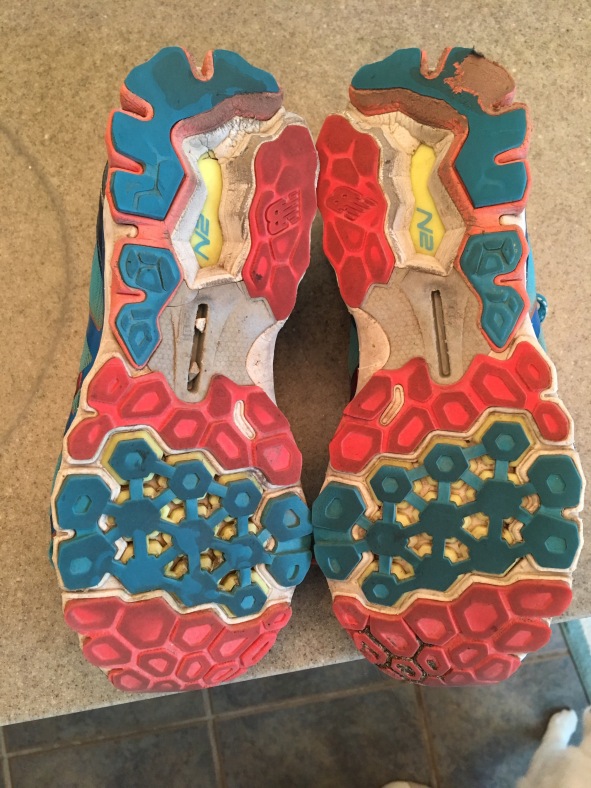I am an avid runner and I am often asked how many miles I run in my shoes before getting a new pair. I don’t keep track of this because (a) it takes too much time and effort to keep a running total of mileage and (b) I prefer to evaluate the outputs by examining the wear on the shoe soles.
Rules of thumb suggest replacing running shoes every 500 miles or less. These rules of thumb make assumptions about the relationship between the inputs (mileage) and outputs (shoe wear). Running style effects how quickly a shoe wears out, so your mileage may vary. I am a hard-core heel striker with high arches, so I accumulate wear more quickly than the average runner. A back of the envelope calculation suggests that I run about 400-500 miles on each pair of running shoes before replacing them. Perhaps I wait too long to replace my shoes.
I prefer to assess shoe wear directly instead of approximating it with my mileage. Ultimately, runners should replace their shoes when they no longer give proper support, regardless of the mileage. Using mileage as a proxy for wear can work when evaluating inputs is easier than evaluating outputs. Some runners find that is easy to calculate their mileage if they closely follow training plans or record their mileage using an app.
Alternative rules of thumb based on outputs are often less quantitative than the rules of thumb based on inputs. For example, Runners World recommends to “go by feel” and replace shoes when it does not feel like they are supporting and cushioning enough. I also check out the wear to the soles and the tears in the fabric as signs that the shoes have had enough. Going by mileage is more clear cut and involves less interpretation, which many seem to prefer.
Replacing running shoes is not the only time I prefer evaluating outputs to inputs. I breastfed all three of my children. Women who formula fed their children would often ask me how I knew if the babies had enough milk because they had measured the formula they gave to the babies (the inputs). I could not directly measure how much milk my babies were drinking, but the outputs helped me confirm that the babies were feeding enough. The outputs in this case were diaper changes, and they were easy to measure. I started keeping an eye on the outputs during my hospital stays after the deliveries. I continued to evaluate the outputs until I returned to work and started to pump, when I could directly measure how much milk I pumped and the babies fed.
For more reading on inputs and outputs, I recommend John D. Cook’s blog post about evaluating people in hierarchical organizations by their inputs or outputs.
When do you evaluate a system according to its inputs or its outputs? How do you decide when to replace your running shoes?



July 6th, 2017 at 4:58 pm
Substantial signs of physical wear and tear is definitely an indicator for me as well. I also comfortably fall in the “Clydesdale” runner category, so I’m usually more attuned to the feel of my shoes once they hit about 200-250 miles (I have Strava alert me when shoes exceed 250). It’s not a hard cut-off for shoe retirement, but rarely do I have a shoe that–based on outputs of support and wear–can exceed 300 miles.
July 8th, 2017 at 6:00 am
I’m with you. This is definitely a case in which I make a decision based on the system output. In addition to physical signs of wear and tear, I rely on my subjective feeling of the adequacy of the shoes when I lace ’em up and hit the pavement (earth seems to be much more forgiving of running in shoes beyond their useful life). I’ll admit to checking these with the input mileage rule of thumb to determine whether my decision to replace is reasonable or if I may need to make some adjustments to my running style to reduce wear and tear, but that’s it.
However, in my professional life as a risk analyst who assesses the risks of extremely rare events, I routinely have to rely on assessing the quality of the inputs and the process used to construct the risk model to judge the quality of the risk model and its outputs.
I’m sure you’re no stranger to this, but I find Donabedian’s “Structure-Process-Outcome” framework for assessing and improving quality to be quite useful. This seems to be analogous to an “Input-Process-Output” way of thinking.